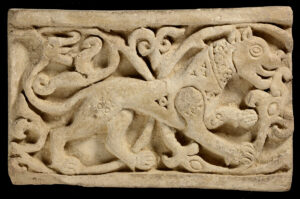
LNS 1071 C
Unglazed earthenware tile with a lion amidst a scroll; the tail and scroll develop dragons’ heads
Ceramics is one of the oldest industries, dating back to the Paleolithic era, more than 30,000 years ago. While The al-Sabah Collection is rich in ceramics, the primary focus of the collecting effort concentrated on covering the range of different techniques used by potters from the earliest Islamic period through to the 19th century. The examples below include an early earthenware bowl painted in lustre which displays a metallic sheen produced by metal oxides when the piece was fired a second time in a kiln low in oxygen. This technique of decoration was first employed on ceramics in Iraq in the 9th century CE, subsequently to spread far and wide over a period of almost a millennium.
The development of fritware in the 11th – 12th centuries CE provided the Islamic potter with a white body superficially simulating that of Chinese porcelain, which reigned supreme as the most luxurious and expensive of ceramics. Among well-known types of Islamic pottery with frit bodies are various large and small bowls, jars, etc., from Iranian lands, Syria and Turkey.
The use of polychrome ceramic tiles to decorate buildings was an ancient Near Eastern decorative tradition and became one of the most important products of the Islamic potter. Decorative techniques largely paralleled those employed for vessels. Additional techniques were developed for the manufacture of the large-scale designs that building tiles demanded.

Unglazed earthenware tile with a lion amidst a scroll; the tail and scroll develop dragons’ heads
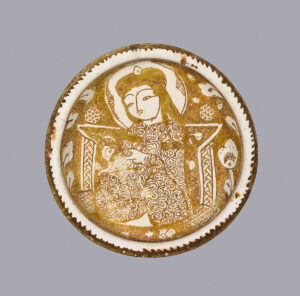
Three-footed composite-bodied ceramic dish with lustre-painted enthroned and haloed prince amid blossoms
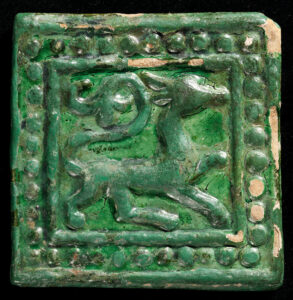
Three earthenware tiles, all featuring near-identical goats with tails terminating in curled half-palmettes
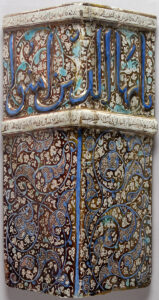
Two lustre tiles, probably from a shrine, inscribed with Qur’an verses (al-Rahman 36–39; Saba’ 9–11)
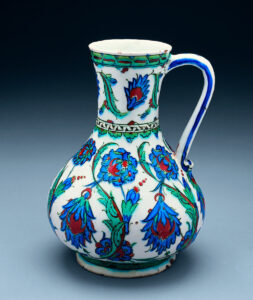
Composite-bodied ceramic ewer with upright foliate scrolls bearing lotus blossoms on the body and neck
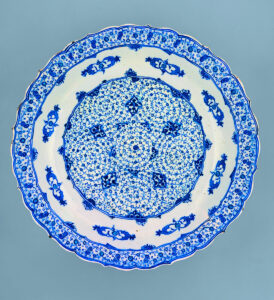
Composite-bodied ceramic dish with dense foliated scrolls, stylized palmettes and Chinese-style cloud devices
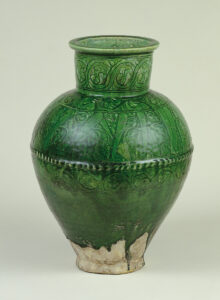
Composite-bodied ceramic jar with a mannered cursive inscription of good wishes around the shoulder
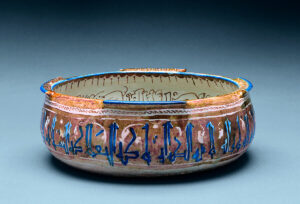
Composite bodied bowl painted in cobalt blue and metallic lustre with inscriptions and a date (Shawwal 614 AH / January

Mosaic inscriptional panel (composite-bodied ceramic set into plaster) with Qur’an 2:286 on a spiralling scroll
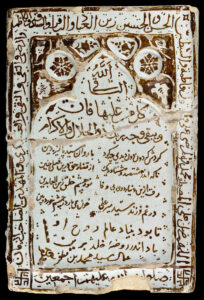
Composite-bodied lustre-painted ceramic ‘tombstone’ with Qur’anic passages, invocations and obituary verses
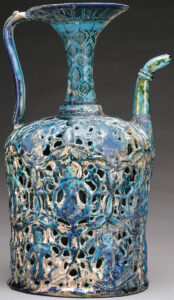
Reticulated double-walled composite-bodied ceramic ewer with seated princely figures
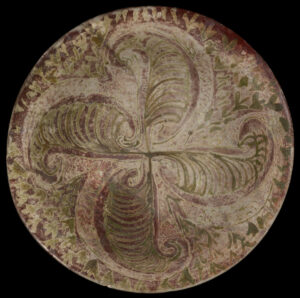
Earthenware bowl, metallic lustre-painted in copper red and olive green with whirling half-palmettes
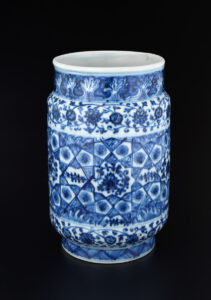
Porcelain jar with an Islamic infinite pattern of ten-pointed stars, pentagons and other polygons
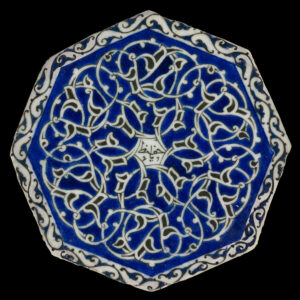
Composite-bodied ceramic tile from the Mausoleum of Khwaja Rabi‘, Mashhad; inscribed ‘O Protector’
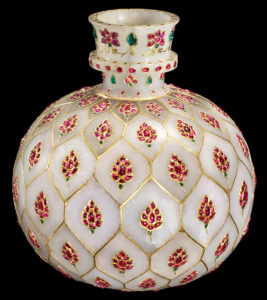
The al-Sabah Collection possess an unparalleled assemblage of pre-Islamic and Islamic jewellery and jewelled objects. These objects represent not only the almost eternal quest for beauty, but the aesthetic and technical skills of generations of artisans.
In addition to what
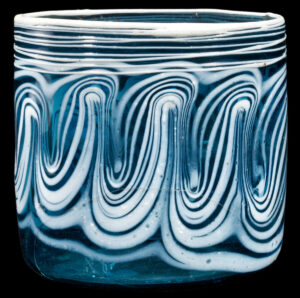
Glass objects in the collection date back almost 4,500 years and include objects from virtually every period since. The depth of the glass objects in The al-Sabah Collection allows both scholars and visitors to study, understand and appreciate the evolution
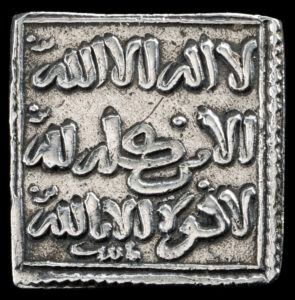
With more than 12,000 coins in the collection, The al-Sabah Collections numismatic holdings are extensive. Coins in the collection were minted in virtually every corner of the geography of the Islamic world. Equally notable, they were minted over a period